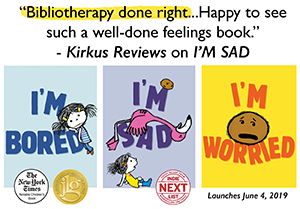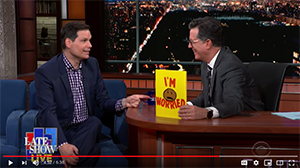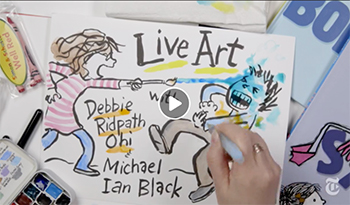Debbie Ridpath Ohi FAQ > Getting Into The Business > I'm writing a picture book and want to include art notes for the illustrator. How should I do this?
Search the FAQ for entries containing:
This is a list of questions I am frequently asked. Here's a list of links to my more popular pages. Thanks for visiting! -- Debbie
------------
Q. I'm writing a picture book and want to include art notes for the illustrator. How should I do this?
There are differing opinions on the use of art notes in picture book manuscripts. Some editors don't mind them, others advise leaving them out. This also goes for page breaks -- some editors won't expect page breaks while for others, including page breaks show that you've put thought into story flow and page turns.
My advice: Only include an art note if there is something important that you want to illustrations to show that isn't clear in the text. Think hard about the "important" part. I have found that there is a tendency of some new picture book authors to want to micromanage the illustrator. This is usually because some new picture book author authors misunderstand the relationship between a picture book author and a picture book illustrator during the creative process; they assume that the illustrator's job is just to illustrate what's in the text.
Example of a bad art note:
----------------------------------
Page 6
(Art: Suzy is a 6-year-old little girl with blonde ringlets that cascade over her shoulders. Her dress is yellow with blue polka dots and her shoes are red. She is wearing an angry expression as she crouches in front of her brother's toy box. Camera angle should be from above. Her right hand is reaching out for her doll.)
Suzy found her doll in her brother's toy box.
----------------------------------
I've worn both the writer's and illustrator's hats in children's books, though mostly the latter. Now that I have some experience, I find I'm at the point in my career when I can turn down book projects that don't look they'd be fun to do. If I received a manuscript with detailed art notes that left very little room for creativity on my part, I would turn it down.
Do check the publisher guidelines and research editor/agent preferences; sometimes they'll specific whether they want art notes or not.
How to format your illustration notes:
Again, do check the publisher guidelines. As far as I can tell, there doesn't seem to be ONE accepted standard.
If there is an overall art note that is integral to the plot, then you could include it in a short paragraph at the beginning of your manuscript. An art note for a particular spread could be in parentheses after the page number of page spread.
Here's what I do:
---------------------
10-11
(Art: Stevie looks terrified.)
"I'm not scared!" said Stevie.
--------------------
Even when they get art notes with a manuscript, some editors will remove these art notes (and page breaks) before passing the text to an illustrator because they want to see what ideas the illustrator comes up with first.
Some related resources you might find useful:
Picture book manuscripts and illustrations - by Harold Underdown
How do you handle illustrator notes in picture book manuscripts? - Susanna Leonard Hill (she hardly uses any illustrator notes in her pb mss)
The risk of illustration notes in picture books: guest editor Stacy Innerst - on DearEditor.com
Should you include illustration notes in your picture book? - KidLit.com
Art notes in picture book manuscripts: grid format solution - Tara Lazar (points out this is not a standard solution)
Last updated on October 16, 2015 by Debbie Ohi








